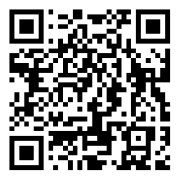
Guide for domestic CO detector production
1. Aging for finished detector
1.1 Check aging workshop, assure every aging machine work normally.
1.2 Put assembled CO detector onto the aging machine, connect to the power supply and check that if every detector work normally.
1.3 Recheck the detectors every hour, some solutions need to made if any detector work unnormal.
1.4 Make the detectors to be aging at least 48 hours, then make the calibration and test.
2. Calibration of the finished detectors
2.1. After at least 48 hours aging, put the detector into calibration box and connect to the power supply, make the detectors enter into calibration status, then make calibration after warm up.
2.2. Close exhaust fan, make the box airproof and open mix round fan. According to status of the detector and under monitor of the CO Infrared analyser, infuse some CO gas (50ppm---400ppm) through the hole. When the preset alarming point set finished, cut off the power supply, open exhaust fan, let all CO gas out.
2.3. After all CO gas out, let the detectors connect to the power supply again into normal monitoring status, after warm up over, close exhaust fan, make the box airproof and open mix round fan. According to status of the detector and under monitor of the CO Infrared analyser, infuse some CO gas through the hole, make calibration according to local CO detection standard. If some faulty detector, repair and make the calibration again.
3. Make box
Size of the box could be made according to the requirement. Measurement=Length×width×height. It is better to use material that difficult to absorb gas and do not volatilize gas, such as, plexiglass, stick with glass glue, do not use some Adhesives with excitive smell.
Note: Improper material would poisoned the sensor.
4. Monitor equipment
For the measurement equipment, with Infrared principle and Infrared Sensor, it has an absorb pump inside, which could absorb the detected gas inside of the box into the Infrared Sensor, then make detection. And it could show concentration of the gas on its screen real-time.
Technical data:
Working voltage: AC220V
Detection gas: CH4 or CO
Detection range: CH4: 0-50000PPM
CO: 0-1000PPM
Resolution: 1PPM
Repeatability: ≤0.1%FS
Linearity deviation: ≤±1%FS
Response time: ≤20s
5. Working priciple of MQ-Q7 sensor
When sensor working, two voltages needed: DC5V and DC1.5V, works circularly. DC5V works 60 seconds, DC1.5V works 90S. DC5V is for clean, sensor do not detect CO under this voltage; DC1.5V is for detection CO. From the above picture, you could see value of the sensor is most stable end of 90S. So when use MCU for detection, we recommend you use voltage at end of 90S as compare value.
For more detailed information, please refer to datasheet of MQ-Q7.
Recommend to use MCU, if you could reach transfer during high and low eletricity level, do not use MCU is also OK, such as you could use 555 timer. And you need to calibrate compare value before end of 90S to reach alarm.
6. Notices
6.1 During aging
6.1.1 Avoid of detector with different aging time and different batchs mixed.
6.1.2 During aging, if power off suddently, it is necessary to record time, if off time more than 2 hours, all detector need to be re-aging, if more than 10 minutes less than 2 hours, aging time need to be 4 hours more; if less than 10 minutes, no additional steps be taken.
6.2 During calibration and test
6.2.1 As CO is harmful gas, so please make sure to be safe
6.2.2 Before infuse CO gas, make sure the box is airproof.
6.2.3 When infuse CO gas, plese be slow, assure no gas leakage.
6.2.4 When calibration and test finished, CO inside of the box need be out safely.
6.2.5 If CO leakage, please leave soon, ask professional people hanle.
HJP Technology Co., Ltd
Contact:Angela Sun
Mobile:+86-18603812197
Email:[email protected]
Add:No.11 Zhengshang Road, Zhengzhou, 450007, China